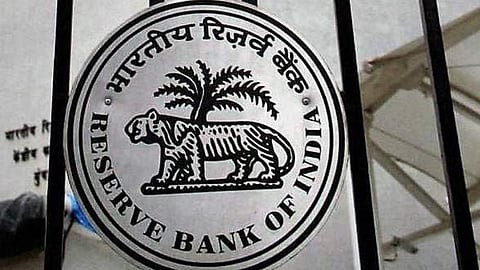

MUMBAI: The sharp increase in the provisioning for financing under-construction infrastructure projects to the tune of 5 percent upfront from the present 0.2 percent as proposed in the Reserve Bank’s draft guidelines on project financing will massively raise the cost of debt leading to dampening of the bidding appetite from infrastructure developers in the medium-term, warns a report.
The monetary authority on May 3, issued draft guidelines for project financing which seeks to increase the provisioning for under-construction/delayed infra projects in a staggered manner as the central bank has found evergreening of dud loans.
The objective is to ensure that lenders do better and more realistic project appraisals and also align the NPA reporting norms in this segment with the rest of the credit market.
The suggestions are so stringent that since the two trading days since the guidelines were issued seeking industry comments, the infra and financial services sector stocks were bleeding, loosing almost 4-5% in two days.
According to Careedge Ratings, the sharp increase in the provisioning for standard assets to 5% for all fresh and existing project loans from 0.2% in a staggered manner in under-construction projects, will have a direct impact on the cost of debt, which will dampen the bidding appetite from infrastructure developers in the medium-term.
The draft guidelines are implemented as proposed, this will present funding challenges for both under-construction and operational infrastructure projects.
A mandatory tail period accounting for 15% of a project’s economic life will restrict the ability of infra projects to secure additional top-up loans, this according to the agency will necessitate an 8-10% increase in equity requirements for HAM-based road projects to align the loan tenure with 85% of the economic life for concessions lasting 15 years.
Since projects with stable cash flows, such as road annuities, transmission, and commercial real estate, typically see an improvement in credit profile within one year of establishing a payment track record from the counterparty, the mandate to reduce debt by 20% to lower provisioning could delay the realisation of interest rate benefits from operational projects, despite an enhanced credit profile.
Furthermore, the general provision of 5% of the funded outstanding shall be maintained on all existing as well as fresh under construction exposures on a portfolio basis as provisions, there is an additional 2.5% provision is to be maintained for accounts that have availed of the DCCO deferment and the cumulative deferment exceeds two years for infra projects and one year for non-infra projects.
These changes in provisioning standards will have a direct impact on the cost of debt. For example, in availability-based projects such as annuity, for every increase of 100 bps in interest rate, there will be a drop of 5-7 bps in the average debt service ability profile.
In the case of demand-based projects such as toll etc, for every increase of 100 bps, the decline in average debt serving ability may be of 7-10 bps.
The mandatory tail period of 15% of the project’s economic life is estimated to reduce the leverage carrying capacity by 8-10% from the current level especially for the projects having shorter concession, while it is estimated to increase equity requirements by 8-10% for realigning loan tenor to 85% of economic life. It also restricts top-up loans for all infrastructure projects.
However, the agency says since infrastructure projects like airports, seaports, thermal plants, renewable projects, electricity transmission lines, and gas pipelines have longer economic life and concession periods, the proposed condition on loan tenor including a moratorium not exceeding 85% of the asset’s economic life will not have any material adverse impact at the time of financing of these projects.
But in cases of projects having shorter concessions, such as road annuity projects where the operational period is 15 years, the shortened tenor will leave the projects with a tail period of 2.25 years compared to the existing 1 to 1.5 years. While this reduces the overall repayment period by a year, it also decreases the leverage carrying capacity by 10% from the current level, even while maintaining the same debt service coverage ratio.
Since the new guidelines has kept out Invits from its ambit, there is an increased likelihood of operational assets to be transferred to Invits which will lead to higher debt at Invit level